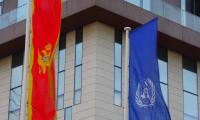Montenegro
Montenegro's recent election marks a step towards a democratic future, anchored in further EU-Integration
Montenegro gained its independence in 2006 after a referendum where the Montenegrins voted to separate the country from Serbia, with whom Montenegro had been in federation since 1991. Only a little more than 55% of the cast votes supported independence, coming close to the lower threshold needed for the decision to be valid. In 2007 Montenegro ratified its first constitution and became a presidential republic with a unicameral parliament. Montenegro applied for EU-membership in 2008 and was granted candidacy from the EU-commission in 2010 Montenegro submitted an application to join the EU in 2008, and the EU Commission approved its candidature in 2010. In 2015 Montenegro was invited to join NATO, which prompted critic from the pro-Russian opposition, public protests, and became a major theme in the 2016 presidential election. Montenegro nevertheless succeeded in joining NATO as the 29th member in 2017.
The latest presidential election in April 2023 was won by Jakov Milatović from Pokret "Evropa sad!" (”Europe Now!” Movement), which was on the ballot for the first time. PES and Milatović campaigned on an anto-corruption and pro-EU platform. It is the first time in the short democratic history of Montenegro that the presidency isn’t held by the dominant Demokratska partija socijalista Crne Gore (Democratic Party of Socialists of Montenegro). Despite fears for the opposite, the incumbent president from DPS, Milo Đukanović, conceded defeat and congratulated Milatović.
Population: 619,211.
Liberal Democracy Index: 0,4.*
[LDI encaptures both electoral and liberal aspects of democracy]
Proportions of Seats held by Women in Parlament: 27,2%**
Proportions of Seats held by Youth under 30 in Parlament: 4,9%**
*V-Dem Institute
**IPU.org
